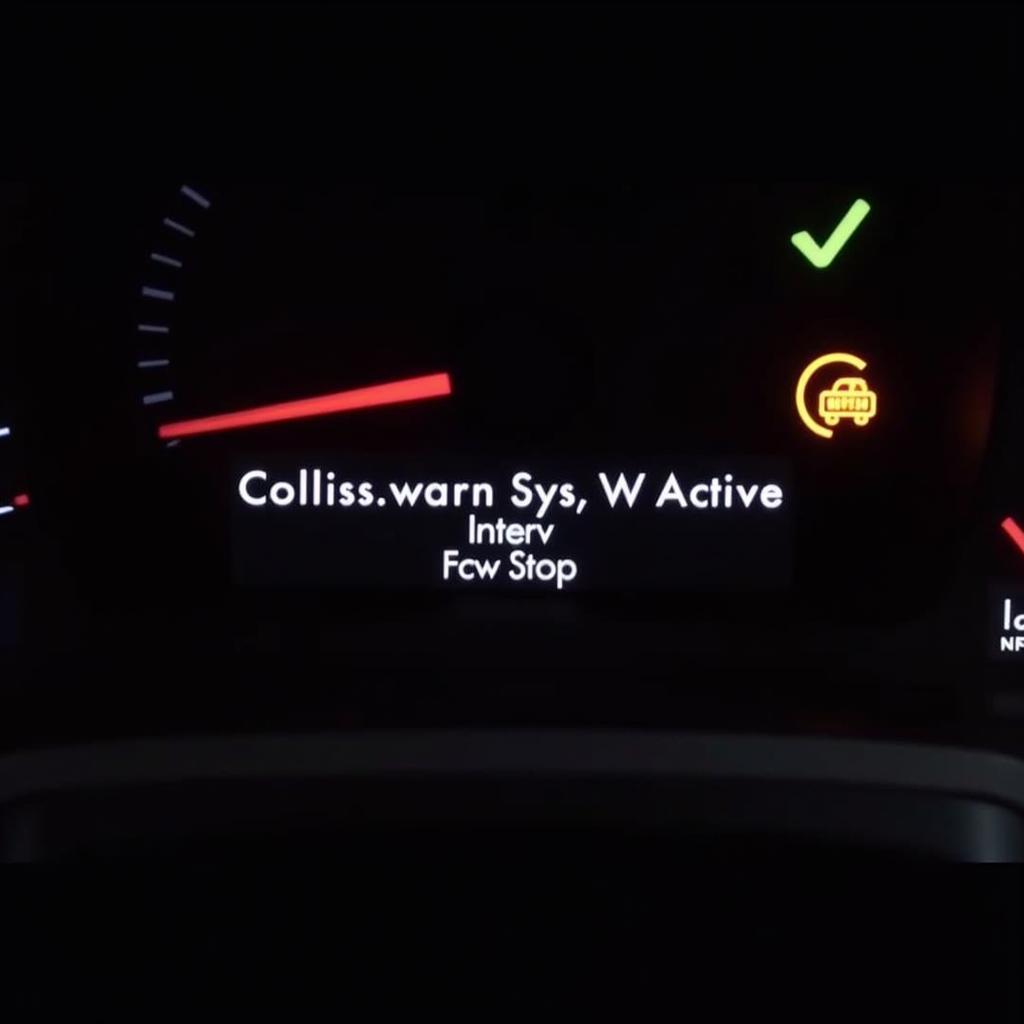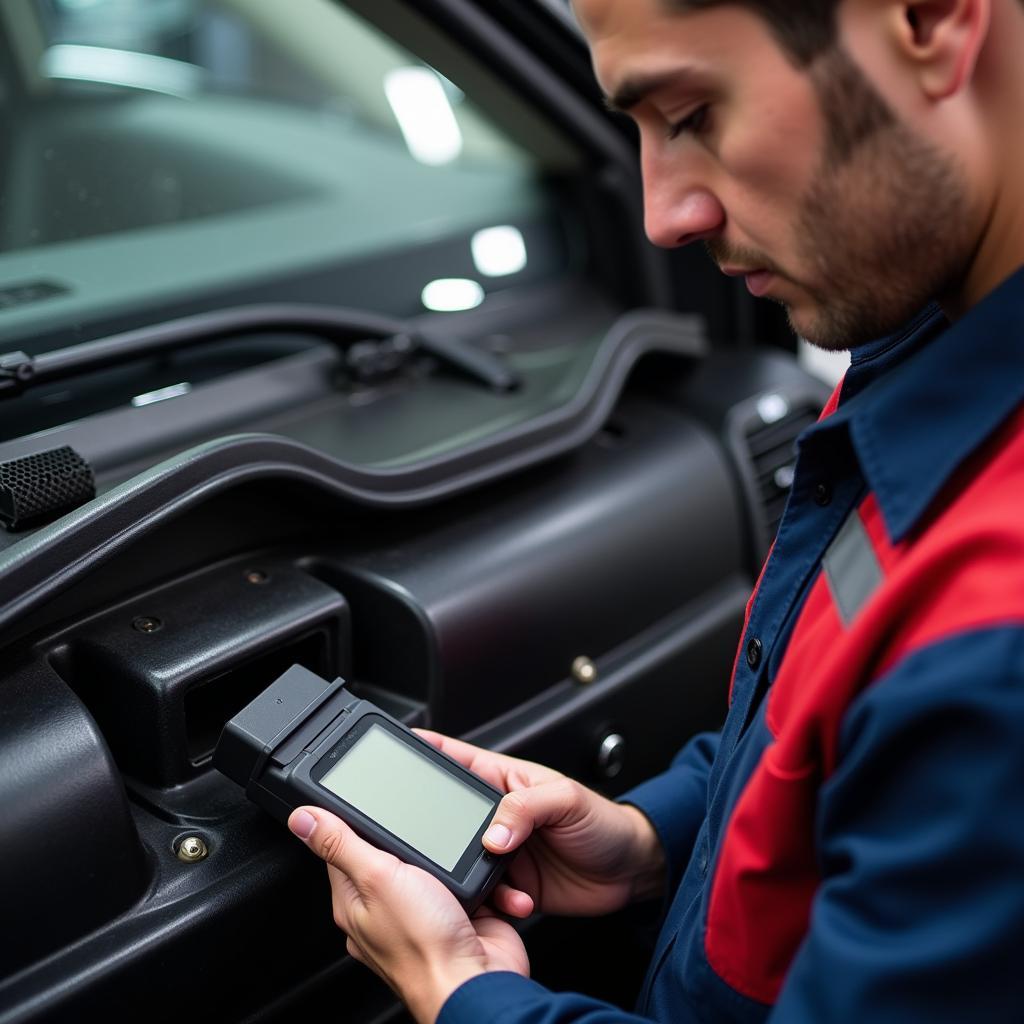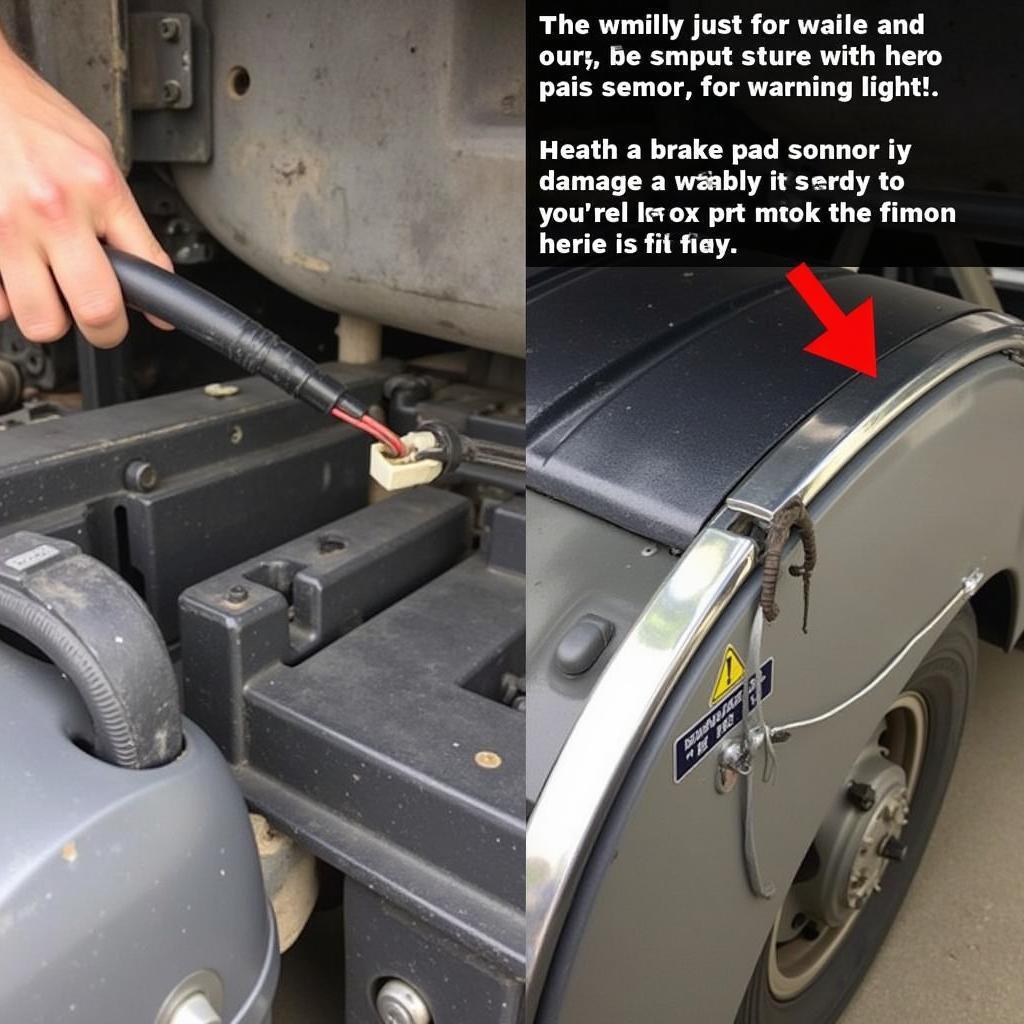Imagine cruising down the road, your favorite song playing on the radio, when suddenly, a jarring warning message flashes on your dashboard: “Collis.warn Sys W Active Brake Interv Fcw Stop.” What does it mean? More importantly, should you be worried? This article dives deep into this cryptic car error message, demystifying its meaning and outlining the steps you can take to address it.
This error message usually pops up in vehicles equipped with Advanced Driver-Assistance Systems (ADAS). While the exact wording may vary slightly across car manufacturers, the core message remains consistent: Your car’s collision warning system has detected a potential hazard and might engage automatic emergency braking. Let’s break down what each element means:
- Collis.warn Sys: This refers to your car’s Collision Warning System. This system utilizes sensors, typically radar and cameras, to monitor the distance between your vehicle and the vehicle in front of you.
- Active Brake Interv: This indicates that your car’s Automatic Emergency Braking (AEB) system is active and ready to intervene if necessary. AEB automatically applies the brakes to avoid or mitigate a collision if it senses that you’re not reacting quickly enough to a potential hazard.
- FCW: Stands for Forward Collision Warning. This system is designed to alert you, usually through visual and audible warnings, when it detects a potential collision risk with the vehicle ahead.
- Stop: A clear instruction for you to apply the brakes immediately.
 Car Dashboard Displaying Collision Warning
Car Dashboard Displaying Collision Warning
Why Did This Warning Appear?
Several factors can trigger this error message, even if no immediate danger exists:
- Short Following Distance: Maintaining a safe following distance is crucial for any driver. This system is designed to be extra cautious and may issue a warning if it senses you’re too close to the vehicle in front, even if you’re within a safe braking distance.
- Sensor Obstruction: Dirt, debris, snow, or ice can obstruct the sensors responsible for the collision warning system. Even a minor obstruction can lead to false readings and trigger the warning.
- System Malfunction: Like any other electronic system, the ADAS in your car can experience glitches or malfunctions. A faulty sensor, software error, or wiring issue can cause the system to behave erratically.
What Should You Do?
First and foremost, don’t panic.
- Assess the Situation: Is there a genuine risk of collision? If so, react immediately by applying the brakes and maneuvering safely to avoid an accident.
- Maintain Safe Distance: Increase the distance between your car and the vehicle in front. This will often be enough to clear the warning message.
- Check for Obstructions: If you’re in a safe location, visually inspect your car’s front grille and bumper for any dirt, debris, or other obstructions that might be interfering with the sensors. If possible, gently clean the sensors.
- Restart Your Car: Sometimes, a simple system reboot can resolve temporary glitches. Turn off your car, wait a few minutes, and then restart it.
- Consult Your Owner’s Manual: Your car’s owner’s manual provides valuable information on understanding and troubleshooting warning messages.
When to Seek Professional Help
If the warning persists even after you’ve taken the above steps, it’s time to consult a qualified automotive technician. They have the expertise and diagnostic tools to pinpoint and address the root cause of the problem.
“Ignoring persistent warning messages can have serious consequences,” warns John Miller, a seasoned automotive diagnostics expert with over 20 years of experience. “These systems are designed to work in conjunction with your driving, not replace it. Addressing any issues promptly ensures your safety and the optimal performance of your vehicle.”
 Mechanic Performing Car Diagnostics
Mechanic Performing Car Diagnostics
Conclusion
The “Collis.warn Sys W Active Brake Interv Fcw Stop” message, while initially alarming, serves as a crucial safety reminder. Understanding what it means and responding appropriately can significantly enhance your driving safety. Remember, regular car maintenance, sensor cleanliness, and a proactive approach to addressing warning messages are key to a safe and enjoyable driving experience.

